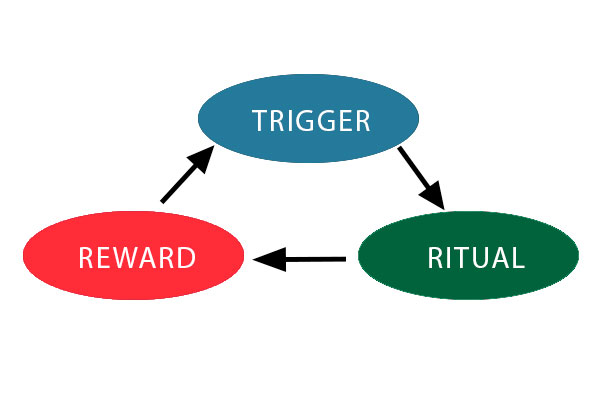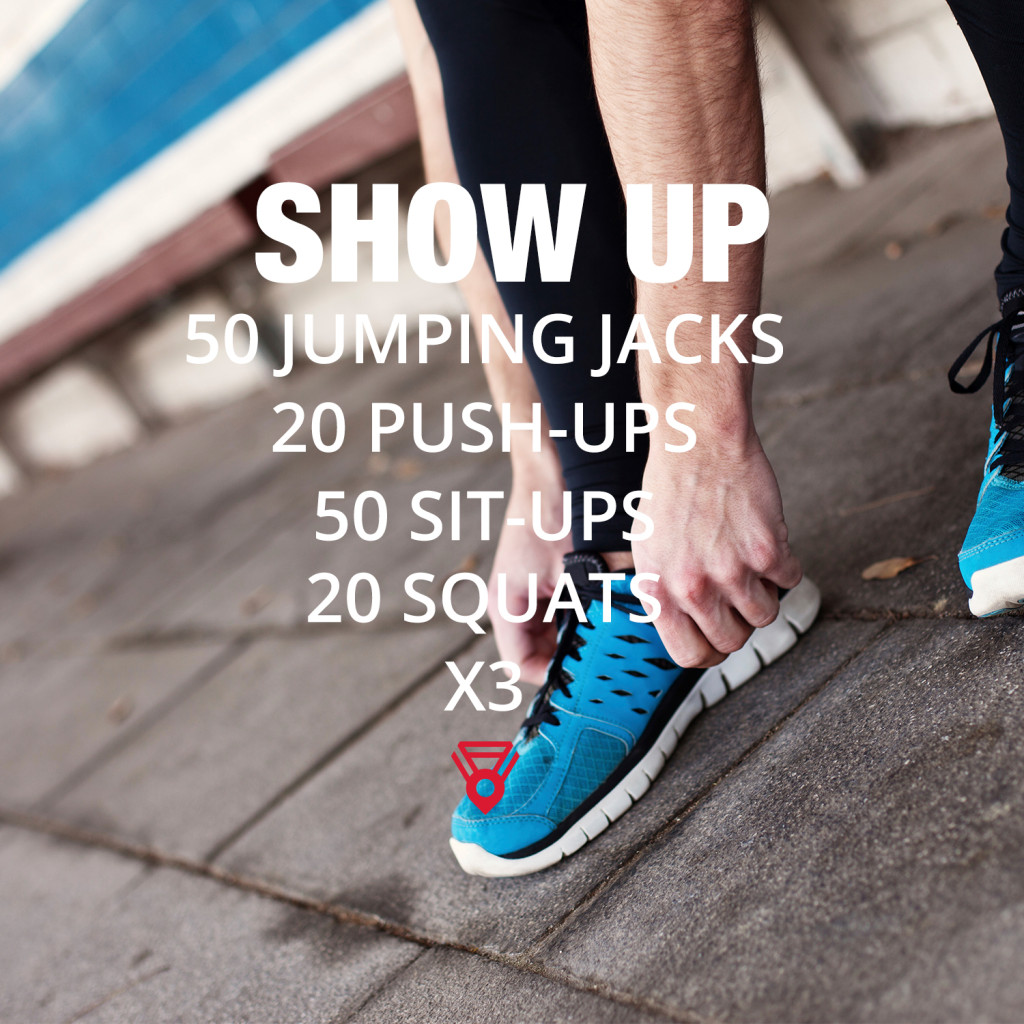Habits are mental-shortcuts to get things done without having to think too much. Brains love habits. It’s brain efficiency. Scientists have now uncovered the critical building blocks of habits. This is great because it’s like we’ve been handed the wiring diagram to the brain together with clues on how to break bad habits and form healthy ones. That’s why just do it is terrible advice. Follow these steps!
STEP 1: Learn the pattern, crack the code.
Scientists have discovered that all habits follow very a predictable and logical pattern. They are comprised of a ‘neurological loop’ – science-speak for a predictable pattern of events in the brain and body that helps them run on autopilot. The loop consists of three important elements: a TRIGGER, a RITUAL, and a REWARD. If you want to break or modify a bad habit, you need to first figure out which is causing the most problems. If you’re trying to start a new healthy habit, you need to design a new bullet proof loop that fits into your schedule.

STEP 2: Uncover your RITUAL
The ritual is the actual behavior or craving that needs stopping (or starting), including when and how it occurs. This is the starting point for all habit breaking. Try to become more aware of your rituals be doing some self-experiments. For example, you might notice that your evening snacking ritual always involves getting off the couch between 7-8pm, walking over to the food cupboard, foraging for something sweet, and then slouching back on the couch with your treats.
If you’re trying to start a new habit, you should design the ritual so it has a good chance of becoming automatic. If it’s overly complicated or requires a lot of thought, it doesn’t stand much of a chance. For example, if you want to go out for a run every morning before work, you might plan the ritual as follows: 1). Change into run clothes immediately after getting out of bed 2). Visit bathroom, 3). Drink single espresso, 4) Lace up shoes while mentally picturing run route; 5) Leave the house at exactly 6:15 am!

STEP 3: Experiment with REWARDS
The REWARD is the thing that stops the craving or alleviates the negative feelings. It might be the pleasure you get from eating chocolate, or temporarily forgetting that you’re lonely (the reward) when you hit the booze (the ritual). For some people, the reward is the driving force behind the habit because powerful brain chemicals create feelings of pleasure (caused by dopamine) and or happiness (caused by serotonin). The goal is to uncover what need or craving the reward was satisfying. Does it change a feeling, like boredom, anxiety, or loneliness? Does it change an internal physical state, like hunger or pain?
If you’re still not sure, try this experiment: Switch out the reward for a ‘fake’ reward while keeping the exact same ritual. See what happens to the feeling or internal state.
For example, you might go to the food cupboard at the same time you always do, but instead of taking the chocolate, you drink a bottle of fizzy water instead. If after 10-15 of drinking the fizzy water the cravings have subsided or gone, you know it wasn’t hunger.
If you’re still not sure what it is, try writing down the exact feelings you’re experiencing 10-15min after having the reward then try other fake rewards (like chewing gum, drinking hot tea, or going on Facebook, etc.) and repeat the experiment.
If you’re trying to start a new healthy habit, make sure you create a meaningful reward for your new ritual – something that makes you feel good. Your new reward might be stopping for a Cappuccino on your way to work or meeting up with a friend to actually do the run with you. Why not try giving $1 for every mile you run to a monthly fund that you can use for a [charity, outfit, new gadget, etc.] at the end of the month? A word of caution: avoid choosing a reward that sabotages your new habit (like ordering a 1000 calorie drink after burning 250 calories during your run!).
STEP 4: Isolate your TRIGGER
Once you’ve figured out the routine and reward, the next step is to isolate the trigger. The trigger is the event that cues the brain to start the habit. It’s your habit’s starting pistol. For example, the alarm clock going off is the trigger to get out of bed. However, triggers often go undetected by your conscious brain. Triggers can be ‘things’ (e.g., your cell phone), circumstances (e.g., a time of day) or feelings (e.g., boredom, anxiety, hunger, etc.). The brain hack is to isolate the trigger so you know exactly what sets the ritual off, and then change it.
Triggers fall in to one of five categories: Location, Time, Emotional State, Other People, or What you were doing immediately prior. To diagnose your trigger, make notes about these categories every time you do the habit. For example, you might discover that your night time snacking only happens when you’re in your own home, between 8-10pm, when you’re bored, and usually after you’ve been channel surfing and couldn’t find anything to watch.
If you’re trying to start a new habit, design new triggers carefully. For example, lay out your run kit the night before as a visual reminder in the morning. Some people even sleep in their running clothes the night before to make the trigger really powerful!
However, it might just take a post-it on the refrigerator reminding you of your ‘why’ for the new lifestyle with an exercise goal for the day. Good habits need good triggers.
STEP 5: Develop your Plan
 Once you’ve uncovered your ritual, experimented with rewards and isolated your trigger, the final step is to put the pieces together and write out the new habit ‘loop’ on paper.
Once you’ve uncovered your ritual, experimented with rewards and isolated your trigger, the final step is to put the pieces together and write out the new habit ‘loop’ on paper.
Think of this like a diagram describing each element and how you intended to disrupt it (break bad a habit) or create it (start a new habit). Then start practicing!



